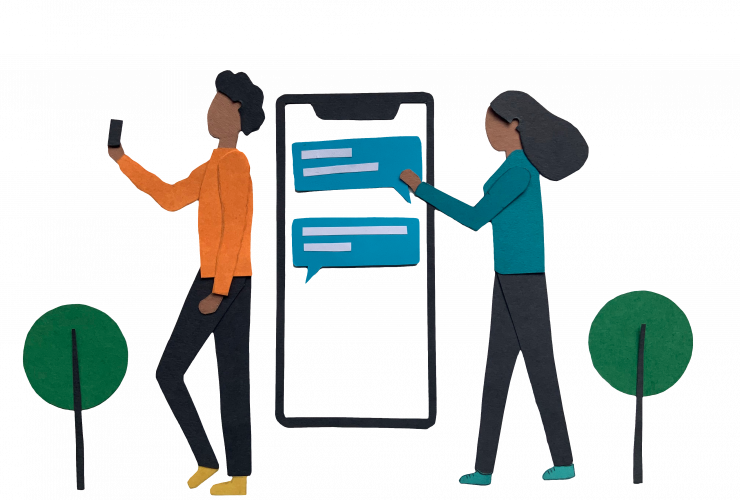How to Make a Good Offer
In marketing for franchisors and franchisees, we often get asked this question: “How do we make a good offer?” Everyone’s trying to figure out how to turn online interactivity into off-line, in-store sales. And when done right, a compelling offer can do just that.
When you’re working with an advertising agency, they will collaborate with you and manage the entire process from creation to analysis. But you don’t always have that luxury, especially when you’re working at the local level. Oftentimes the most effective ads are the ones you can create from one-on-one interactions with your community and learning from them.
So how can you create offers as compelling as or even more effective than the national campaigns?
Before looking at how coupons can be created well, let’s make sure we’re viewing them through the right lens.
Advertising Is Experimentation
You conducted science experiments in your biology or physics classes, right? Maybe you did that Mentos and Diet Coke experiment, or dropped feathers and a bowling ball from a balcony? All these experiments yielded the expected results: the Diet Coke and Mentos create a reaction that erupts, and the bowling ball will hit the ground before the feather.
But what happens if you change the elements by one? What if you drop the Mentos in a jug of milk? Or what if you dropped feathers and a bowling ball in a vacuum chamber?
Different elements mixed together produce different results. So you can’t see someone’s campaign and expect that the results will carry over immediately to you. All factors would have to be exactly the same for that to happen, and even then it might not.
Advertising campaigns are psychological experiments. Theories, not guarantees. So treat every campaign as a learning experiment.
While you may expect to get incredible results each time, that’s not often the case. It may be due to the budget, audience, type of offer, phrasing of the description, the image itself or something else.
[bctt tweet=”Ad campaigns test theories, results not guaranteed.” username=”rallioHQ”]
It’s easy to get discouraged when an offer you’ve worked so hard on and pushed online doesn’t bring in any customers. But having an attitude that no coupon can work only hurts your efforts to find a coupon that does work. Instead of getting upset or throwing offers out altogether, realize it’s simply an experiment and see what you can learn from it.
With that in mind, let’s look at how to create a compelling offer for your customers.
Strategy
When you’re creating an offer, start by thinking of your audience. If you’re not thinking of your customers first, no matter how much money you put behind this offer, it will flop.
Are you trying to reach as many people as possible? Then make sure your offer is as wide as possible to be redeemed by the most people. On the other hand, if you’re targeting a niche audience, create an offer specifically for that audience and their needs.
If you’re struggling to think of ideas for a good offer, ask yourself these questions and write down the answers that come to mind:
- Which customers are more likely to be returning customers?
- Which customers would we like to see more of?
- What’s a popular item/service?
- What’s a highly requested item/service?
- Will we have any beloved items back in stock soon?
- Will any beloved items be going out of stock soon?
If you have time and spend, run multiple offers for your business. Through testing the type of offer, you can see what incentive has more pull for your customers.
Execution
Now that you have your starting foundation — the compelling offer for a specific audience — you need to actually create the collateral marketing that offer. But this is easier said than done, right?
While you’re creating your offer, review these elements to make sure you’re optimizing it for the highest rate of action and completion:
Clarity
Firstly, make sure you have clarified your offer and what it is for your customers. Simplify it as much as possible, and put it in the language they are used to. Don’t use internal product numbers if you use descriptive names front-facing.
Now is also the time to spell out any terms and conditions you have for the offer. One per customer, by appointment only, expires at the end of the month and other details should be ironed out now before the ad gets pushed live.
Image
Keep your image simple and eye-catching. Think about all the other images your customers are going to be seeing. Does it stand out? Is it too overwhelming? Was it taken well? Is it high enough resolution to see it clearly?
Urgency
Adding a sense of urgency or a limit to the ad can increase clicks, engagement and ad uses. Phrases like “Limited time only,” “Only a few days left” and “Only the first 10 customers” can motivate people to act fast while the offer is weighing on their minds.
Note: If you don’t have a way to remind people about the offer after they’ve saved it, you might find a higher engagement rate than opt-in or claim rate. Try to get them to sign up for a reminder or send it to themselves so they won’t forget.
Social Proof
If you can, add a numerical figure to endorse your product. Has the offer been downloaded a thousand times? Have hundreds of people endorsed your product? Has your service saved a customer thousands of dollars or given them hours back in their day? Use that to your advantage and state it in your offer.
Promotion
OK, so you’ve created your offer and are ready to promote it. How do you market your offer?
Organic Promotion
Good ol’ fashioned word of mouth and social sharing. Post your offer or a link to learn more on your major social media networks, and email it to your subscribers. For a lengthier campaign, spend some of your marketing to create handouts or in-store collateral about your offer.
Paid Advertising
Whether through social promotions, Google PPC, display advertising or magazine inserts, advertising can effectively reach the people you’re trying to reach. Or it can flop.
Before you start, review the expected results you’ll get from each and have a way of tracking which campaigns are driving people to convert. Most social media ad networks have analytics in place and conversion pixels you can use to track what people do with your ads. Make sure to implement unique coupon codes for separate distribution channels to clearly be able to analyze the results at the end of the campaign.
Influencers
Why try to reach your audience through commercials when you can connect directly with them through an influencer? If you know you’ll be running a campaign in a few months, reach out to someone who has a large following made up of your audience and see if they’d be willing to work with you to promote your offer. While some influencers may work for the branding and awareness, most will expect to be compensated for sharing your offer with their audience.
Management
Great, now you’ve pushed your campaign out to all your fans, you’ve sponsored your posts across Facebook and Twitter, and you’ve reached a large audience through a local influencer in your industry. You’re not allowed to lean back, put your hat over your head and take a nap! You need to keep engaging and managing the offer throughout the life cycle of the campaign.
Monitor
Keep checking in on your campaign. If you’re running multiple ad campaigns, what results are you seeing so far? Are some performing better than others? Are you finding any issues with your campaign so far? You’ll only know if you’re being alert and watching the progress.
One of our clients was running their campaign and wasn’t seeing any results from their ad set. When they reviewed the ad campaign, they realized they had shared the wrong URL: It was off by one letter. They were able to fix it because they were observing and monitoring their campaign.
[bctt tweet=”Be on top of what’s happening during your campaign” username=”rallioHQ”]
Adapt
As in the above example, if you’re monitoring your campaign, you can make changes on the fly. Alterations can be simply made online, while you might not be able to make them with direct-mail or print pieces.
With online ads such as Facebook ads or Google AdWords campaigns, test different versions of the ad at one time. Then during the campaign, see what’s performing the best and pause the other ones. Copy the best performing ads and tweak their language, imagery or landing page to see if they improve the results. Repeat, repeat, repeat.
Review
Once your offer campaign has ended, it’s not the end. You’ve reached the most important part of the ad campaign: the review process.
Brand Awareness
Before, during and after the campaign, analyze how much your audience discusses your brand on average. The best campaigns produce high awareness during the campaign, and the after-campaign average is higher than the before-campaign average. Review your campaign analytics and look at web mentions to see how frequently your brand and the offer are mentioned.
Brand Engagement
As much as you can, track how people talked about your offer and campaign. It can be easier to do with digital campaigns since you can see how many people liked, shared, retweeted and mentioned your offer. But you can also use a monitoring software such as Mention to track specific campaign keywords across the web to see if anyone found the offer a different way.
ROI
Probably what you’re most interested in determining, the ROI (return on investment) of your campaign gets to the bottom line of whether your offer and promotion process produced the results you were expecting. Don’t forget to compare these figures with your other campaigns, the cost of an average purchase and the rate of new to returning customers.
While looking at the entire ROI of the campaign, make sure to also look at the ROAS, or the return on ad spend. To do this, divide the return from the ad campaign by the ad spend for that campaign. Calculating the ROAS for each advertising or promotion channel (including organic) can help you see what methods of delivery bring the best results for your campaigns.
Learning
Remember at the beginning when I said ad campaigns are experiments and you’re testing your theories? That won’t mean anything if you don’t determine what you’ve learned from them. Maybe this campaign reinforced your ideas about your customers and what they’re interested in. Or maybe the results were unexpected. Review the analytics and come up with new theories based on these results.
Successful campaigns are grown and discovered through testing, trial and error. Make the best guess for what your audience will react to, and then track the results. Regardless of whether it was successful or an abysmal failure, look at the data, make adjustments and try again.


